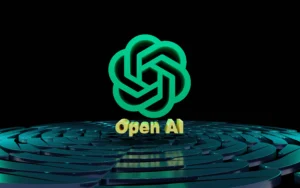You should probably start looking into the most recent generative AI tools if you haven’t already, as they are about to play a much bigger role in how we interact across a variety of developing fields. The next version of the AI model that served as the foundation for ChatGPT, OpenAI releases GPT-4 which is capable of ‘human-level productivity’ across a variety of tasks.
According to Open AI:
“For example, it passes a simulated bar exam with a score around the top 10% of test takers; in contrast, GPT-3.5’s score was around the bottom 10%. We’ve spent 6 months iteratively aligning GPT-4 using lessons from our adversarial testing program as well as ChatGPT, resulting in our best-ever results (though far from perfect) on factuality, steerability, and refusing to go outside of guardrails.”
These restrictions are necessary because, despite being a remarkable technical accomplishment, ChatGPT has frequently led users astray by providing false, fabricated (or “hallucinated”), or biased information.
Snapchat’s new ‘My AI’ system, which is based on the same back-end code as ChatGPT, provided the most recent illustration of the flaws in this system.
Some users have found that the system can offer unsuitable information to young users, such as advice on drinking and using drugs and how to keep such things from your parents.
Although there are intrinsic risks in using AI programs that generate responses based on such a wide variety of inputs, and “learn” from these responses, improved guardrails will protect against such. Nobody knows for sure what that might mean for system development over time, which is why some companies, like Google, have cautioned against the widespread adoption of generative AI tools until all of the potential ramifications are clear.
But even Google is now making progress. Google has also announced that it will likely be incorporating generative AI into Gmail, Docs, and other services in response to pressure from Microsoft, which is attempting to integrate ChatGPT into all of its apps. Microsoft recently disbanded one of its main teams focused on AI ethics, which doesn’t seem like the best move given how frequently these tools are being used.
This may be a sign of the times given that the pace of adoption from a business perspective outpaces worries about legislation and responsible use of the technology. And we already know how that works; before Meta and others recognized it, social media also experienced rapid adoption and widespread distribution of user data.
These courses seem to have been pushed to the background as a fast value once more takes precedence. You’re more likely to engage with at least a few of these tools in the very near future as more tools hit the market and more integrations of AI APIs become standard in apps, however, it happens.
What does that mean for your work and career? How will AI affect what you do and either improve or alter your course? Again, we don’t know, but as AI models develop, it may be worthwhile to try them out so you can gain a better grasp of how they apply in various situations and what they will do to your workflow.
This improved model will exclusively build upon how we’ve already described how social media marketers can use the distinctive ChatGPT. As always, though, you should exercise caution and make sure you are aware of the limitations.
According to OpenAI:
“Regardless of its capabilities, GPT-4 has comparable limitations as earlier GPT fashions. Most significantly, it nonetheless is just not absolutely dependable (it “hallucinates” information and makes reasoning errors). Nice care ought to be taken when utilizing language mannequin outputs, significantly in high-stakes contexts, with the precise protocol (comparable to human assessment, grounding with extra context, or avoiding high-stakes makes use of altogether) matching the wants of a particular use-case.”
Although the outputs of AI tools are rapidly improving, it is important to understand the full context of what they are creating, especially when it comes to professional applications.
But once more, they’re arriving; more AI tools are emerging in new places, and sooner or later, you’ll be utilizing them in some capacity throughout your daily activities. You would become more dependent on these systems, lazy, and more willing to believe what they say. However, use them with caution and in a controlled flow; otherwise, you risk losing trust quickly. Source link


